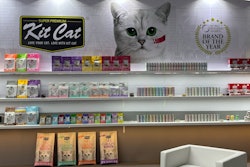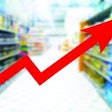
I’ve been closely tracking and reporting on pet food inflation, particularly in the U.S., for nearly two years now. That’s thanks to the yeoman’s effort by John Gibbons, aka the Pet Business Professor, in compiling and analyzing monthly data from the U.S. Bureau of Labor Statistics (BLS) — and also because I think the data and information are important to the industry, not least because it affects which pet foods pet owners buy and how they perceive the industry and market.
For the past several months, that information has been mainly good news of declining pet food inflation, following the falling U.S. consumer price index (CPI). Yet surveys and polls continually show consumers feeling negative about the economy and their own financial situations. Considering pet owners are consumers, how does that affect their ability to pay for their pets’ food and how they feel about it?
Monthly pet food inflation vs. the ‘before times’
First, the good news: October 2023 data from BLS shows pet food inflation at 6.5% year over year (YOY), which is down from September’s 7.6% YOY, which was down from August’s and so on since late spring 2023. Likewise, the CPI has continued its YOY decline; the October figure is 3.2%.
Food at home (basically groceries), which I think is good to track due to the strong link between human food and pet food, is at an even healthier 2.1% YOY; and pet care overall, including other pet products, services and veterinary care, is at 5.2% YOY. All much more positive than the highs we saw last year and even earlier this year.
Yet Gibbons’ analysis also includes comparisons going back even farther, which I confess I have not reported as faithfully. Those data likely help explain why consumers indicate they’re still feeling pain. Take pet food: Looking at the “before times” (pre-pandemic), in October 2019, pet food prices in the U.S. today are 22.9% higher. For food at home, it’s even worse, up 25.77%. The overall CPI is up 19.6% compared to October 2023.
In other words, prices for many items consumers need and buy, including pet food, increased significantly and haven’t decreased nearly enough, at least not yet. For people also struggling with higher costs for many other necessities, such as housing, gas, health care and child care, increased costs for consumer goods really hit home.
In a March 2023 consumer survey by Lending Tree, 64% of Americans said they live paycheck to paycheck, wrote Karen Petrou, managing partner of Federal Financial Analytics, in a New York Times op-ed. “For most Americans, a sense of financial well-being doesn’t come from capital returns in the stock market or even from house price appreciation,” she said. “It comes in each paycheck and benefit payment, and is challenged by each bill and receipt from the supermarket. Paychecks are falling shorter and shorter for more and more households.”
Petrou added that more middle-class Americans are also worried about the economy now, with 57% responding to a Harris Poll that they are struggling with higher borrowing costs.
Costs still a concern for pet owners, producers, suppliers
Petrou’s column was about the political implications of the U.S. economy and consumer perceptions of it. My intent here is not to delve into politics or economic analysis; I’m far from qualified to comment on either, anyway. But I think her comments might provide some insights into how many pet owners might feel about the pet food prices they’re paying.
As with the overall economy, surveys of pet owners show more and more specifying the cost of pet ownership as a concern. Costs may also be limiting pet ownership; Hill’s Pet Nutrition’s recent “2023 State of Pet Shelter Adoption Report” indicates the top barrier to such adoptions is the cost of ownership, cited by 71% of respondents. Inflation was one of the concerns named by those respondents.
In terms of a cause for that inflation, Gibbons’ latest analysis of BLS data includes the pet food producers price index (PPI), which had also been declining earlier this year, at least on a YOY basis. However, it has remained at the same 8.1% YOY figure for at least three months now, and compared to pre-pandemic October 2019 data, is up a whopping 28.9%.
Which many of you already know. If you’re a pet food manufacturer, you’ve been paying higher prices for ingredients, transportation, you name it, for several years now. And if you’re a pet food supplier, your costs have likely risen accordingly, which you’ve had to pass along to your manufacturer clients. I know many companies tried, early in the pandemic, to hold off on passing on those increasing costs to customers, as well as to consumers in the form of higher retail prices, but that could sustain only so long.
The costs of ingredients, other materials and transportation seem to have mostly stabilized, but that doesn’t mean you’re all paying substantially less now, definitely not back to pre-COVID levels. Stability at a higher level still means increased costs; events like wars, geopolitical conflicts and climate disasters prevent those costs from decreasing in any meaningful way. Which transpires to pet owners still paying more for their pets’ food.

















